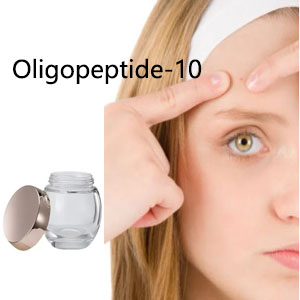Oligopeptide-10 Benefits and Applications in Skincare: How It Works and Why It Matters

Oligopeptide-10 is gaining attention in the skincare industry for its ability to target acne, reduce inflammation, and support a healthier skin microbiome. This peptide is recognized not just for what it does, but for how it does it—with a gentler approach compared to many conventional ingredients. As the demand for evidence-backed, skin-friendly actives continues to grow, understanding the role and mechanisms of Oligopeptide-10 becomes crucial for formulators, dermatologists, and skincare enthusiasts alike.
What Is Oligopeptide-10?
Chemical Nature and Origin
Oligopeptide-10 is a short-chain peptide composed of 10 amino acids. It is typically synthesized through bioengineering methods and designed to mimic natural defense peptides found in human skin. Its primary function is to regulate microbial activity, particularly against Propionibacterium acnes, a key contributor to acne.
Peptide vs. Traditional Antibacterials
Unlike harsh antibacterial agents that can strip the skin and disrupt its barrier, Oligopeptide-10 is selective in its action. It targets acne-causing bacteria while preserving beneficial microorganisms, making it a more balanced and skin-friendly option for long-term use.
Main Benefits of Oligopeptide-10 in Skincare
Anti-Acne Support
One of the most well-documented effects of Oligopeptide-10 is its ability to combat acne. It interferes with the biofilm formation of P. acnes, reducing bacterial load without causing resistance. This makes it ideal for formulations aimed at managing acne-prone skin.
Anti-Inflammatory Action
Oligopeptide-10 helps to calm redness and swelling commonly associated with breakouts. Its anti-inflammatory properties make it suitable not only for acne treatment but also for conditions like rosacea or irritated skin following cosmetic procedures.
Microbiome Support
Maintaining a healthy skin microbiome is increasingly seen as a pillar of effective skincare. Oligopeptide-10 contributes by targeting harmful bacteria selectively, allowing the skin’s natural flora to thrive. This contributes to improved skin resilience and overall health.
Compatibility with Other Actives
This peptide is versatile and can be combined with ingredients like niacinamide, salicylic acid, or hyaluronic acid without triggering irritation. It works well in both water-based and emulsion systems, expanding its usefulness across different formulation types.
Formulation Applications and Product Types
Serums and Spot Treatments
Due to its potency and precision, Oligopeptide-10 is often used in serums targeted at acne management. It can be applied directly to inflamed areas or across the face in a low-concentration formula to prevent future breakouts.
Post-Procedure Skincare
Following treatments like microneedling or laser therapy, skin is vulnerable and sensitive. Products containing Oligopeptide-10 help reduce inflammation and support recovery while minimizing infection risk.
Daily Preventative Skincare
For those with oily or combination skin types, daily-use moisturizers or gels containing Oligopeptide-10 can help keep acne at bay without disrupting the skin’s natural balance. It offers a preventative strategy rather than a reactive one.
Scientific Evidence and Clinical Support
Studies on Antibacterial Efficacy
Clinical data indicates that Oligopeptide-10 significantly reduces the presence of acne-related bacteria within 24–48 hours of application. Unlike antibiotics, there is no current evidence suggesting bacterial resistance, even after long-term use.
Inflammation Markers and Skin Redness
In trials, subjects using Oligopeptide-10 formulations showed a marked decrease in inflammatory cytokines, particularly IL-6 and TNF-alpha. Visual redness was also reduced, typically within one week of daily application.
Who Should Use Oligopeptide-10?
Target Demographics
Oligopeptide-10 is best suited for individuals with acne-prone, sensitive, or inflamed skin. It is appropriate for both teens and adults, including those undergoing dermatological treatments who need supportive skincare during recovery.
Safety Profile and Usage Guidelines
The peptide has a strong safety record and is non-sensitizing. It should be used according to concentration guidelines—usually between 0.01% and 0.1% in cosmetic formulations. Overuse doesn’t necessarily increase benefits and may burden the formula.
Conclusion: Why Oligopeptide-10 Is Worth Considering
As skincare continues to shift toward intelligent, bio-compatible ingredients, Oligopeptide-10 stands out for its scientific grounding, multifunctionality, and gentle effectiveness. It offers a compelling alternative to traditional acne treatments, with added benefits for inflammation and microbiome health. Whether you're formulating a new product or choosing your next skincare solution, this peptide deserves a place in your consideration.


